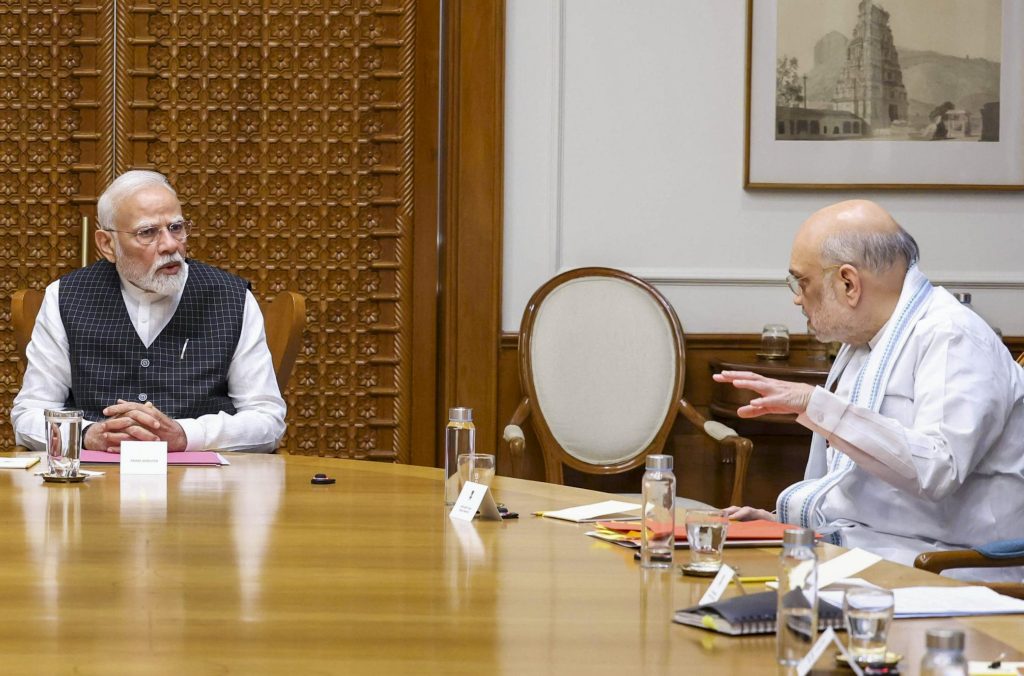Operation Sindoor: India’s Unveiled Air Power Vulnerabilities and Pakistan’s Strategic Gains
Possible Consequences of India-Pakistan Military Engagement: The Aftermath of Operation Sindoor
In a recent Bloomberg interview during the Shangri-La Dialogue held in Singapore, Chief of Defence Staff (CDS) Gen. Anil Chauhan made a vague admission regarding the loss of Indian Air Force (IAF) fighters during Operation Sindoor, which took place on the night of May 6-7. While he refrained from specifying the number of aircraft lost, stating that the quantity didn’t matter, it sparked significant speculation and concern regarding India’s aerial capabilities against Pakistan’s military forces.
The Shadow of Historical Context
While the CDS attempted to downplay the loss, the reality remains stark: understanding the losses of IAF fighters is crucial. This situation recalls the lessons from the 2019 Balakot airstrike, where tactical adjustments were needed but didn’t manifest in an enhanced preparedness for the current operational landscape. The implication here is profound: if India didn’t learn the urgent necessity to bolster its Electronic Warfare (EW) capabilities, then its military and strategic positions may be in jeopardy in any future conflicts.
The perception surrounding Operation Sindoor offers a glimpse into a potential hot war. India’s weaknesses in multi-domain warfare have come into focus, including vulnerabilities across air, land, electromagnetic (EW), space, and cyber domains. Even as Pakistan’s military limitations were unveiled, they seem poised to adapt more swiftly—potentially supported by political and military backing from China—allowing them to conduct surge operations against India faster.
The “New Normal” in Warfare
The culmination of Operation Sindoor has not resulted in a ceasefire; instead, it has established a precarious “new normal.” This state effectively lowers the threshold for war, endangering stability along the India-Pakistan border. The utilization of missiles, artillery, and drones has expanded in this scenario, introducing a continuous cycle of tension. The moment either side decides to break this pause, it could escalate into a full-fledged conflict, bringing both nations’ military capabilities to bear.
Key observations from this situation include:
- Both nations are likely to avoid the nuclear threshold but will engage in high-intensity warfare.
- China stands ready to ensure that the conflict does not spiral into a nuclear confrontation while also bolstering Pakistan’s military capabilities.
- Pakistan’s military strategy is poised for rapid and decisive operations, supported by enhanced information and technological networks.
Understanding Modern Warfare
The recent conflict has underscored essential factors in modern air warfare that contribute to victory:
- A superior fleet of high-end fighters and precision long-range missiles.
- A robust digital ecosystem supporting the coordination of air operations.
- Comprehensive and realistic training to ensure operational readiness.
The ability of one’s air forces to close the kill chain faster than the enemy is pivotal. This refers to the trio’s effectiveness: proper situational awareness, efficient decision-making, and executing actions swiftly to neutralize threats. Therefore, relying solely on advanced aircraft and armaments without reinforcing the underlying infrastructure and training could detriment operational effectiveness.
The Strategic Edge: China-Pakistan Relations
At the core of Pakistan’s military strategy lies a significant factor: the unwavering support from China. As pointed out by Air Marshal Aurangzeb Ahmed, Pakistan has embraced a new approach termed Multi Domain Operations (MDO), integrating both conventional and non-conventional warfare into a seamless operational framework. Key components of this strategy include:
- Advanced Chinese technology in EW and situational awareness.
- Access to platforms such as the J-10C and J-35A fighters, enhancing aerial combat capabilities.
- The integration of China’s BeiDou satellite for comprehensive data and operational support.
As tensions increase, China is likely to provide further advanced weapons systems to Pakistan, ensuring a competitive edge in the evolving landscape of warfare. This includes hypersonic missiles and state-of-the-art drone technologies, which add layers of complexity for India’s defense strategy.
Conclusion: An Uncertain Horizon
The implications of Operation Sindoor and the evolving tactical dynamics it has created raise critical questions for India. While it aspires for deterrence against Pakistan, the operation has arguably strengthened China’s position as a reliable ally to Pakistan, complicating India’s military and geopolitical landscape. As both nations navigate these tense waters, it will require strategic foresight and diplomatic acumen to avert an ever-looming conflict, eliminating the specter of catastrophic warfare from their future.






